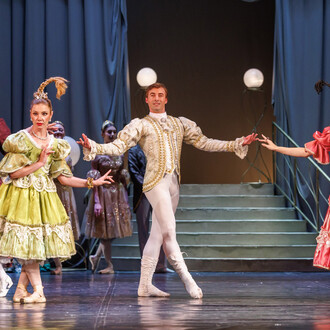The Boccanera Gallery is pleased to present a solo show by Dido Fontana. The aim is to sum up the photographer's recent work by looking back over his solo and group shows in Europe and America, and by juxtaposing them with the commissions he has been given by the world of fashion, communications, and publishing. This is, overall, a wide-ranging production in which two areas, specifically those of creation and commerce, have melded together to allow the emergence of an omnivorous creativity and a strong photographic personality, both with regards to the interpretation of his means and for the definition of his subjects.
The exhibition layout at once plunges the visitor into the cultural and visual context that nourishes Dido Fontana's work. A Pantagruelian installation that in itself alludes to overflowing and liberated pleasure. From a historical point of view, to use a neologism of the 1960s generation it is obvious that what we might call nineteen-eighties-ism has a very solid basis. After thirty years this period no longer has the look of a passing counter-revolution but appears an experiential model nourished by freedom and that, in its disinterested and chaotic flow, eliminated self-righteousness, radical ideologies, and form. So the first room is a cross-section of the human circus consisting of muscles, cross-dressing, gyms, striptease, and profanation. A search for identity that joyously evades any kind of centrality, one that feeds on wigs, dregs, and improvisations and that finds its myths in such personalities as Arnold Schwarzenegger, a bodybuilder, actor, and politician; in blenders, adrenaline, vitamins, health; or Dido Fontana himself, a guru, clown, king. The new myths have generated, like pagan icons, a series of imitators who derive the most ironical aspects from the myths themselves. The outcome, evoked by the title, is a kind of provincialisation of the world that, more than lowering the overall tone by popularising it, takes the form of the undertaking itself to construct a monument to irony and playfulness, one that suggests a sane measuring of reality and, paradoxically, of balancing its relationship with it.
The invitation to deal with the upper and lower limits of the spirit, which are placed on the same level of morality, is to be found in the large prints in the next room. In these photos, also as a result of a more traditional exhibition layout, it is possible to try to decipher with greater attention these, more technical, questions. From a strictly stylistic point of view, Dido Fontana's shots are "incorrect": exposure, framing, the use of the flashlight are all, or almost all, wrong and, when they are right, it is by mistake. This willed haphazardness is reminiscent of the equally incorrect use of painting by part of the avant-garde at the beginning of the twentieth century, and also links Dido Fontana's photography to the spontaneous and improvised look of most of the photos that are to be found daily on social networks and chat lines. This rejection of any kind of photographic virtuosity removes any temptation for photographic sublimation and replaces it with a hymn to the present. This is an anti-rhetorical attempt to dismantle the very forms of cultural impositions and calls the visitors to once more have a greater sense of reality and promiscuity. In line with this way of thinking, in his choice of subjects, who are not professionals, Dido Fontana also gives the camera its own freedom to investigate himself. In his search for new shots, and having used up his circle of friends, he has made a call for the spontaneous appearances of others in front of the camera. At his point an interchange comes about that is concretised in a series of photos set in the areas of daily life of those who wish to be photographed. Finally, to exploit the occasion offered by this show, it is only right to finish with some cultural references that will help us to focus further on Dido Fontana's work. I have already spoken of the indirect references to the freedom with which the first avant-gardes treated the painting tradition: automatic writing, childlike drawing, and ready-mades have all been absorbed in one way or another by Dido Fontana. But it is also necessary to mention some other great irregular photographers. Among them are Hans Bellmer, photographer, artist, and doll maker; Carlo Mollino, architect, artist, and libertine; Leigh Ledare, photographer, artist, and patient; Bettina Rheims, photographer, artist, and now millionaire; Juergen Teller fashion photographer and soccer enthusiast; and Larry Clark, drug addict. - from the text "Stay Strong (Z)" by Denis Isaia
Dido Fontana is an Italian photographer, born in Mezzolombardo in June 29th, 1971. He lives in Borgo Valsugana, a small village next to the Brenta river in Trentino, Italy and he works around the world. He does not retouch his photos because, as he's used to say, reality itself is even too interesting. His style has been defined anti-fashion and neo-baroque.
















